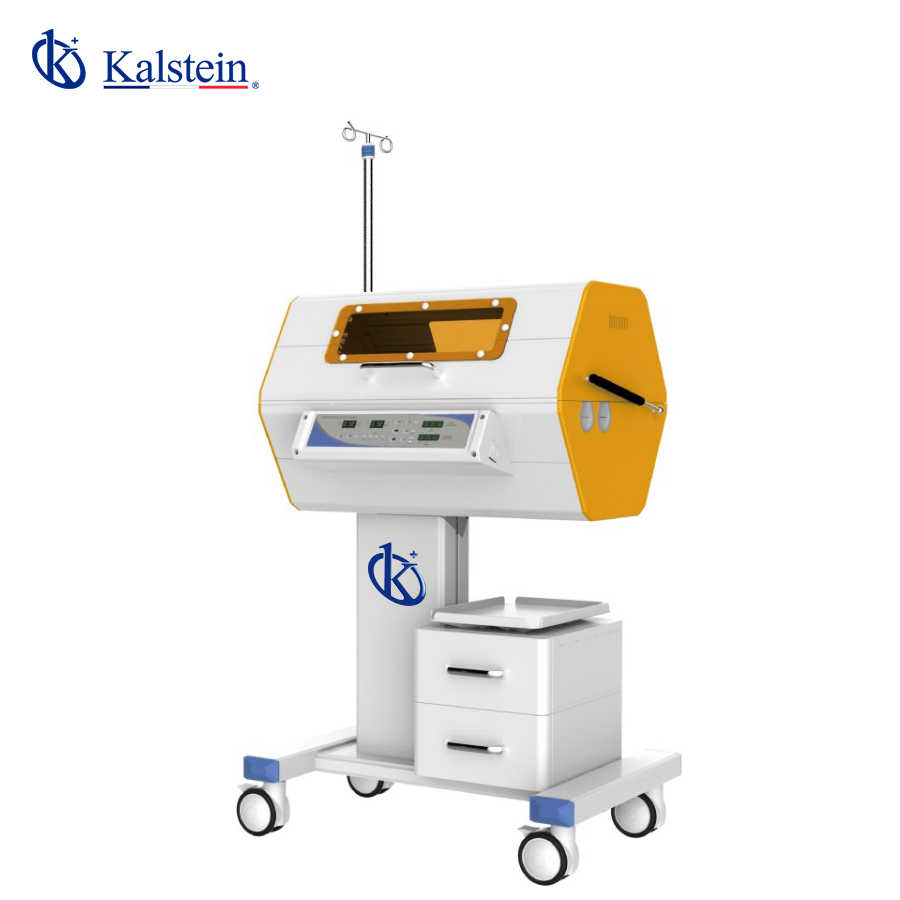The Infant Bilirubin Phototherapy Unit is an essential device for treating neonatal jaundice. This equipment uses light to break down bilirubin in the baby’s skin, facilitating its elimination through natural processes.
With the latest trends in medical technology, these devices have become more effective and safe. This article provides a detailed guide on how to use the Infant Bilirubin Phototherapy Unit to achieve the best results, incorporating practical tips and step-by-step tutorials.
Preparing the Environment
Before starting treatment with the Infant Bilirubin Phototherapy Unit, it is crucial to prepare the environment properly. The room should be clean and free of any items that could interfere with the device’s operation. Ensure that the baby’s bed or crib is in a safe and comfortable position. It is also important to check that the room temperature is adequate to prevent the baby from getting cold during the treatment.
Once the environment is ready, inspect the phototherapy unit to ensure it is in good condition. Check the lights to make sure they are functioning correctly and that there are no damages to the components. Additionally, read the device’s instruction manual to familiarize yourself with its specific features and safety procedures.
Placing the Baby under Phototherapy
Proper placement of the baby is crucial to maximize the effectiveness of the treatment. Place the baby naked under the lights of the phototherapy unit, ensuring to cover their eyes with an eye shield to prevent damage. It is essential that as much skin as possible is exposed to the light, so avoid using clothing during the treatment.
Make sure the baby is comfortable and secure. You can use a light blanket to cover the baby’s body if necessary, but ensure that the light can penetrate and reach the skin. Periodically check that the eye shield is properly positioned and adjust the baby’s position to ensure even exposure to the light.
Monitoring and Adjustments During Treatment
Constant monitoring during treatment is crucial to ensure its safety and effectiveness. Use a thermometer to monitor the baby’s body temperature and ensure there is no overheating. Also, observe any signs of discomfort or skin irritation and adjust the light intensity if necessary.
During the treatment, it is recommended to turn the baby every two hours to ensure even exposure across all areas of the body. Additionally, regularly check bilirubin levels through blood tests to assess the effectiveness of the treatment and determine if further adjustments are needed in the duration or intensity of the phototherapy.
Safety Considerations
The baby’s safety is the primary priority during phototherapy treatment. Ensure that the phototherapy unit is certified and complies with all safety regulations. Keep the area around the device free of objects that could cause accidents or interfere with the treatment.
Additionally, it is important to protect the baby’s skin from potential burns. Check the recommended distance between the phototherapy unit and the baby’s skin, and never leave the baby unsupervised during treatment. If you notice any signs of skin irritation, stop the treatment and consult a medical professional.
Treatment Evaluation and Follow-up
After the treatment, it is essential to conduct a detailed evaluation to determine its effectiveness. Perform bilirubin tests to check the levels and ensure they have significantly decreased. Also, observe any changes in the baby’s behavior, such as improvements in feeding and activity.
Post-treatment follow-up is equally important. Schedule regular appointments with the pediatrician to monitor the baby’s health and ensure there is no recurrence of jaundice. Additionally, stay informed about recent advances in medical research to learn about new recommendations and techniques in bilirubin treatment.
Practical Tips for Parents and Caregivers
For parents and caregivers, understanding the phototherapy process and how to support the baby during treatment is crucial. Ensure open communication with medical staff and do not hesitate to ask questions about any aspect of the treatment. It is also important to keep the baby well-hydrated, offering breast milk or formula frequently.
Creating a calm and comfortable environment for the baby can make a significant difference. Maintain a consistent daily routine and ensure the baby gets enough rest. Also, be attentive to any changes in the baby’s mood or health and report any concerns to the doctor immediately.
Conclusion
Proper use of the Infant Bilirubin Phototherapy Unit can make a significant difference in the treatment of neonatal jaundice. By following this detailed guide, parents and caregivers can ensure that the treatment is safe and effective, taking advantage of the latest trends in medical technology and recent advances in medical research.
With constant monitoring and a focus on the baby’s safety and well-being, the best possible results can be achieved.
We understand that you need equipment that delivers maximum value to your laboratory. We invite you to visit https://kalstein.co.in/category-product/medical-line/infant-bilirubin-phototherapy-unit/, to immerse yourself in our universe of cutting-edge technology equipment. Our prices are competitive and accessible, we combine the convenience of online shopping with the guarantee of an exceptional product. Because you deserve the best, we create and offer top-tier laboratory equipment. Make your choice today, where science comes to life. https://kalstein.co.in/


